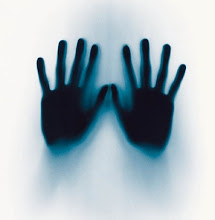On awareness, Jonathan Dillon (CCAT co-president) gave a presentation on his study abroad experience in Ghana. While some students were taking tours in the Louvre or at Big Ben, Jonathan was learning about modern-day slavery.
Ghana only gained complete independence in 1957. As a small, new country, it is still struggling with old issues. Despite laws specifically prohibiting abduction and slavery, communities still observe a religious practice, Trokosi, which translates to "God slave". Families hoping to atone for sins (from murder to petty theft) will take part in this practice by sending a young virgin daughter to work for the priests of a local shrine. Once at the shrine, the girls are at the will of the priest and are often beaten, denied education, and raped upon menstruation. Since these girls are part of a well-known practice, it is difficult for them to escape, and practically impossible to rejoin their community after they finish their servitude at the shrine.
Along with the problems of Trokosi, Ghana has another problem with its fishing industry. Due to poverty and inadequacies of the education system (expensive supplies for an impoverished community, highly inaccessible schools) many of the youth are lured to Lake Volta. There, they are abducted by fishermen who use the children for cheap and expendable labor. Some of the children are small enough that the fishermen will use them to dive underwater and untangle nets which will sometimes snag and drown them. Like the girls at the Trokosi shrines, these children are denied an education, and have little life skills other than fishing when they grow up; and in turn, become fishermen who eventually utilize slavery themselves.
Despite the magnitude of the situation, something can, and is, being done. Non-profit organizations like International Needs and Challenging Heights make it their mission to fight slavery in Ghana. International Needs is trying to address the issues of Trokosi, and with some success. Members of the organization go directly to shrines and explain to the priests that what they are doing is wrong. In some cases, girls have even been released. Challenging Heights attempts to stop the slavery at Lake Volta by offering education in the cities. As an ex-slave, the president of Challenging Heights understands that schools, life-skills, and education on trafficking itself are the most effective tools.
While Ghana might be across the Atlantic, we can still do something about it here. Simply by spreading awareness, one person takes part in refusing this crime against humanity.
CCAT will be having a movie showing in Woodburn Hall Room 120 on Wednesday, November 11 at 8pm. We'll be watching the film Trade and serving all sorts of snacks. If you're into movies, and fighting slavery, try to make it out there.



